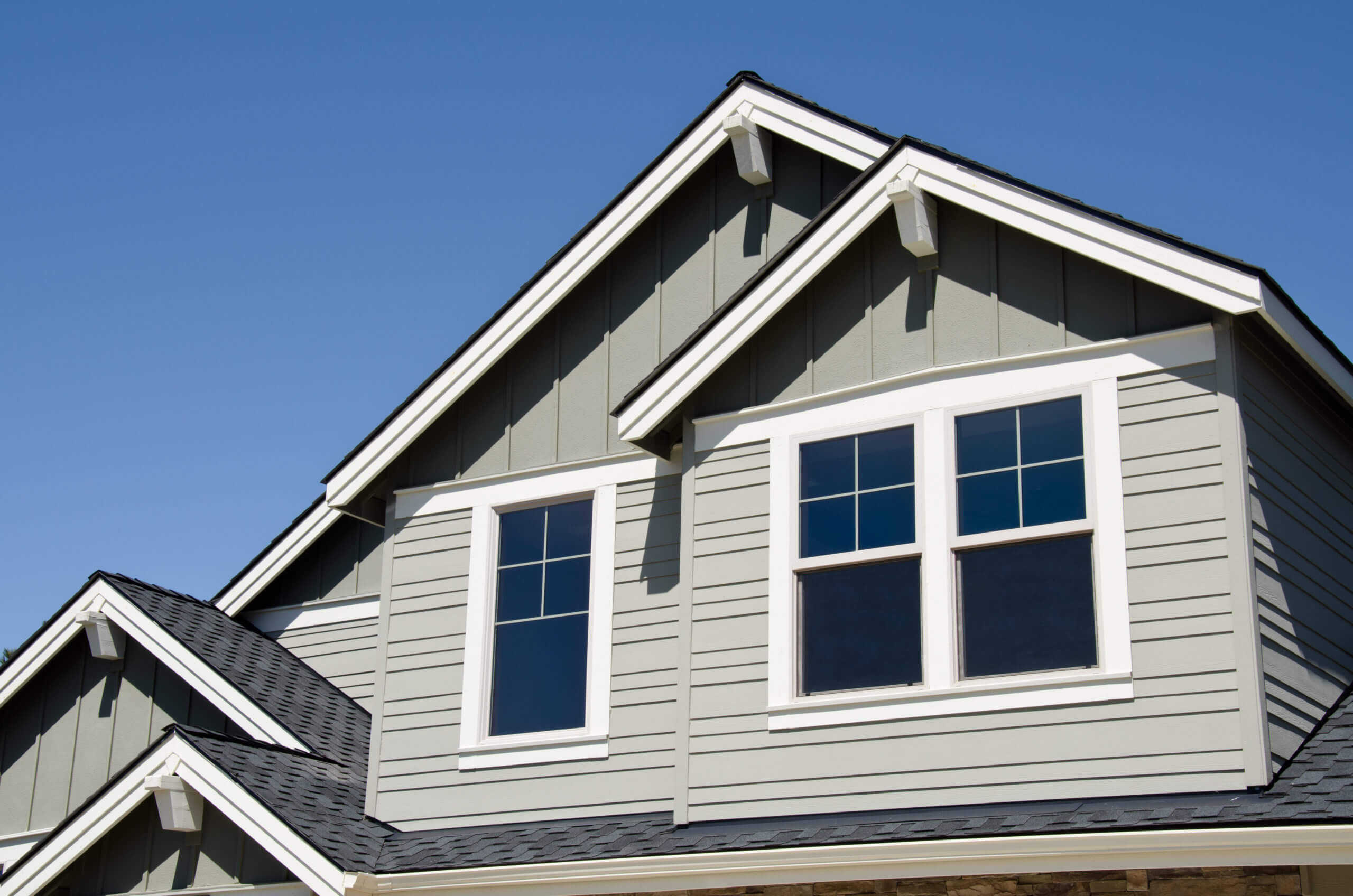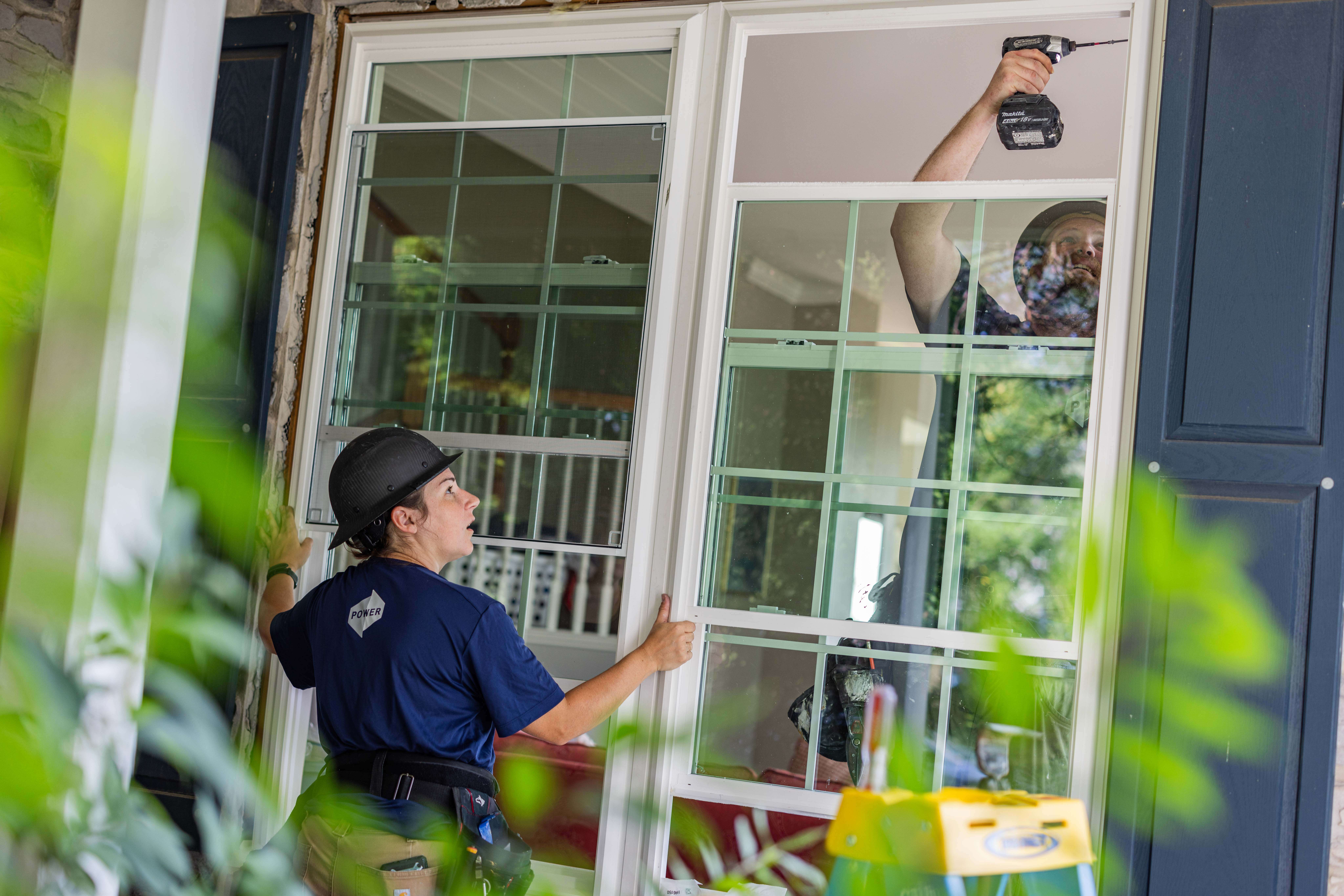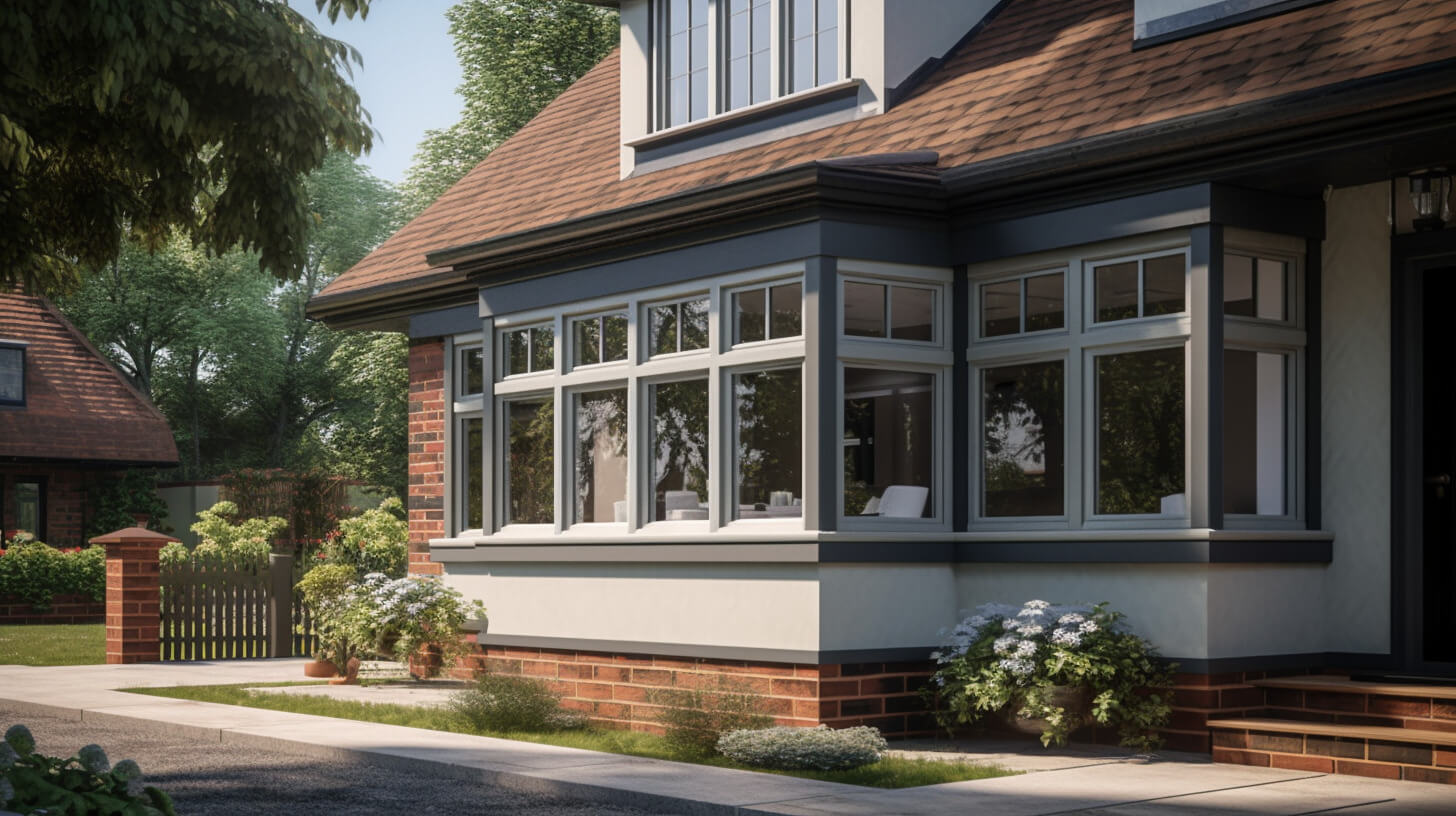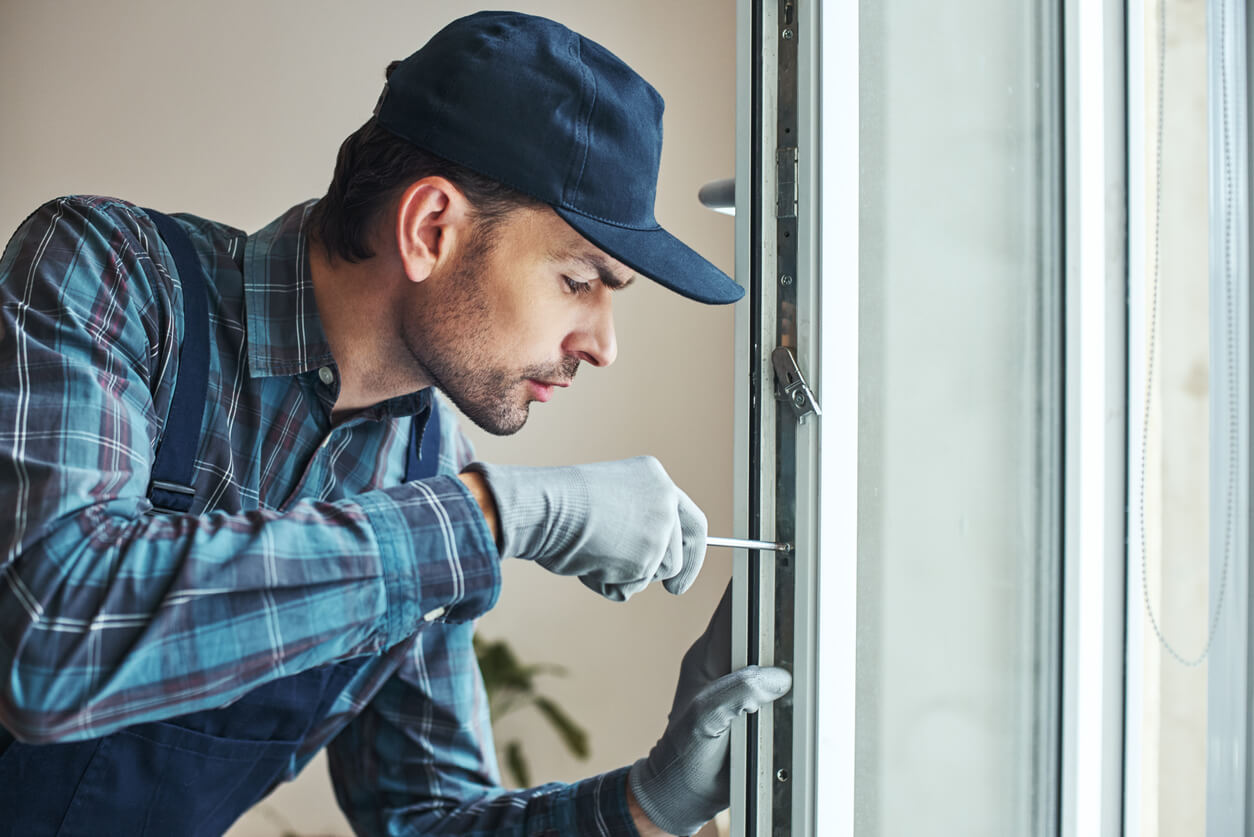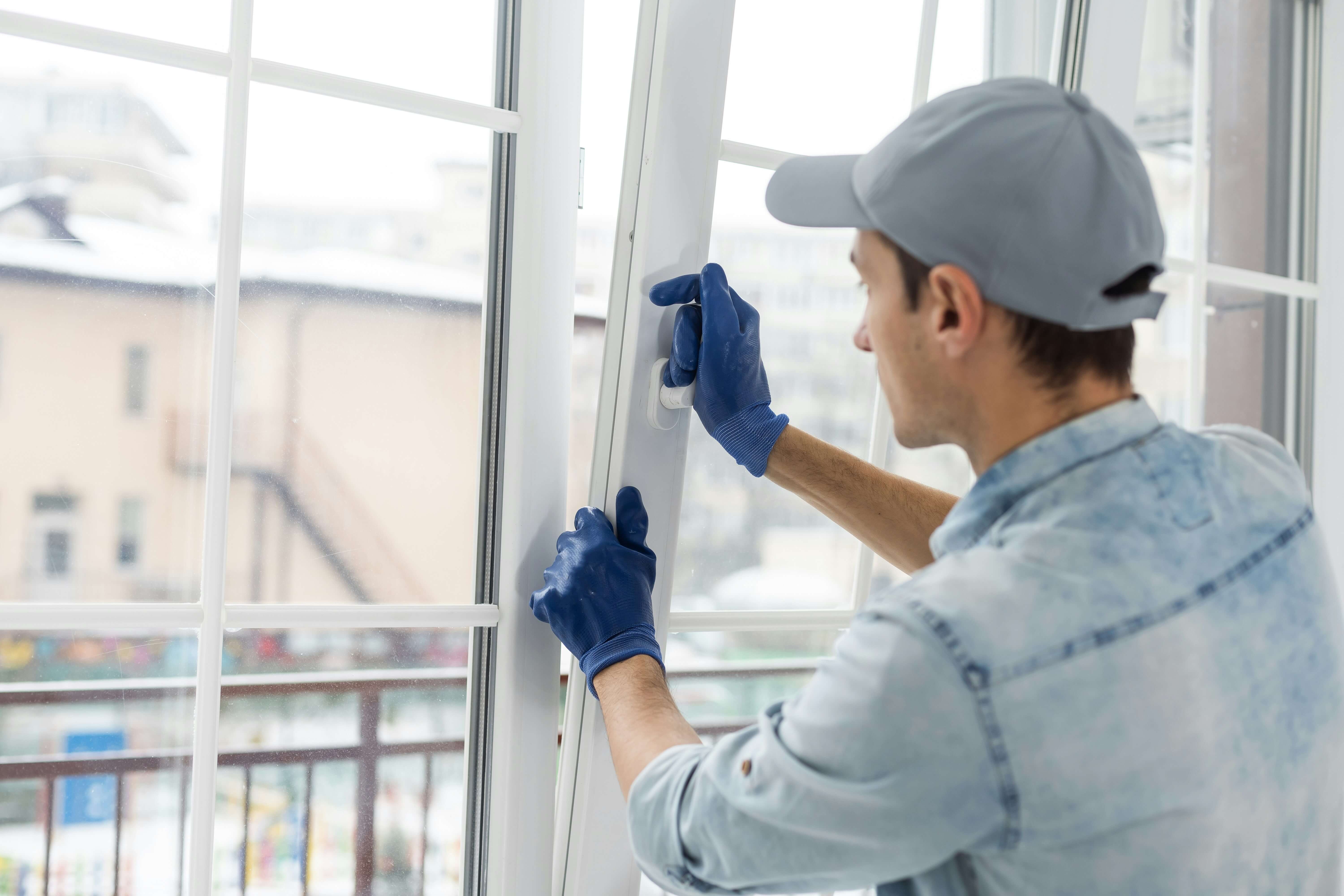Window Parts and Components
New or updated windows can provide your home with added curb appeal and better energy efficiency. What most homeowners don’t realize is the number of parts that make up a window and the role each component plays in the window’s overall function. Understanding each window part and being able to pinpoint them on your window can help when it comes time to plan your next window replacement project or window repair.
While there are a lot of window parts out there, it’s easiest to separate them into three main groups—frame parts, glass parts, and additional parts. Most parts will be standard in some way, regardless of window type, but more specialty windows might feature unique components.
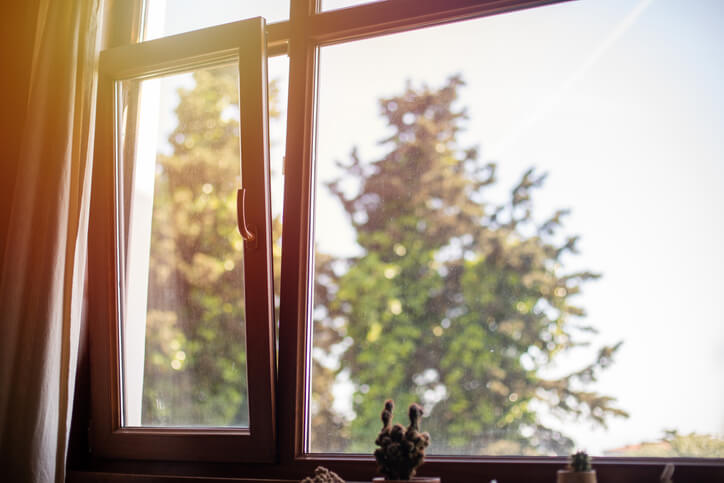
Window Frame Parts
A window frame supports the window and its glass panes. All the parts of a window frame work together to hold the window unit and window glass together.
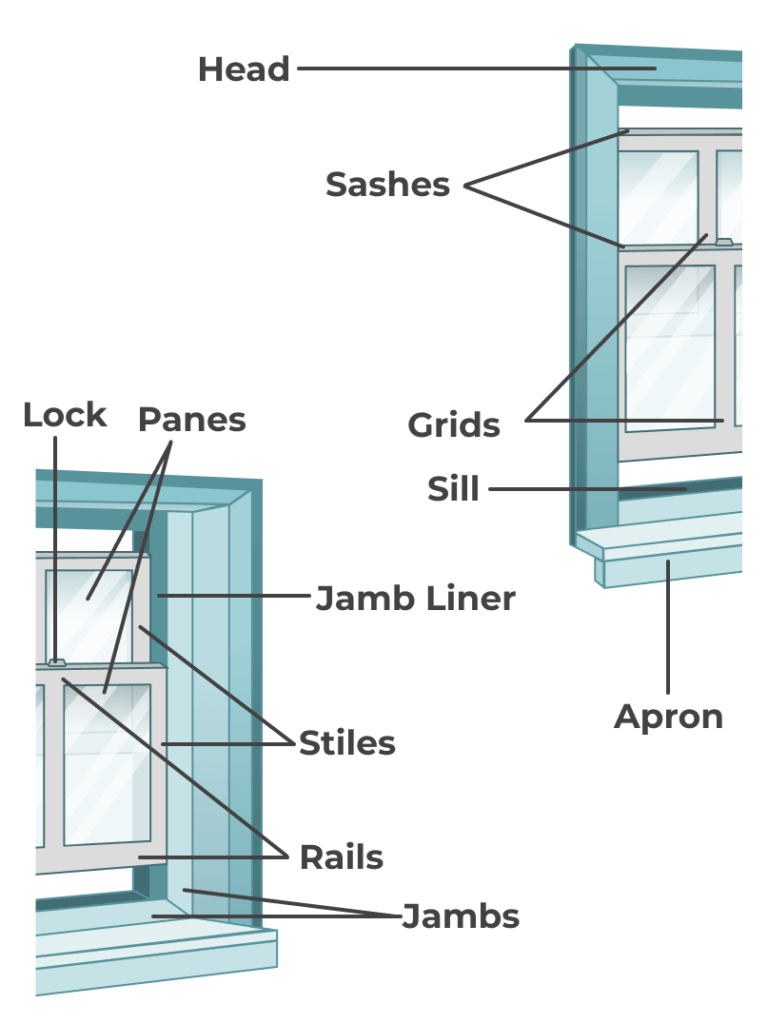
- Sill: The horizontal part forming the frame’s base.
- Jambs: The vertical parts that form the frame’s sides and secures the panes.
- Head: The horizontal part forming the frame’s top.
- Sashes: Comprised of the horizontal and vertical parts of the frame that secure the glass. Window sashes are often used to open windows.
- Jamb liner: A strip on the frame’s sides that provides a snug fit for the sash.
- Grids (Grilles or Muntins): Decorative pieces that divide the panes, providing added stability.
- Stiles: The vertical part of a sash, parallel to the jambs.
- Rail: The horizontal parts of a sash, comprised of a lower, check (where the bottom part of the upper sash and the upper part of the lower sash come in contact), and upper rail..
- Locks: These mechanisms serve to secure the window from outside intrusion, as well as offer added stability to reduce rattling.
Window Glass Parts
- Panes: The central, glass part of a window in which the entire structure is attached. Modern windows can include double- or triple-pane options for added protection and/or noise reduction.
- Spacers: Situated at the base and top of the frame to provide distance between the panes. Double and triple panes require additional spacers.
- Argon Gas: This optional feature is included in many energy-efficient windows and is injected between the panes to offer added insulation and noise reduction.
- Apron: An optional trim that is placed below the stiles providing additional support and decoration.
Read our guide to window glass to understand glass types based on efficiency, design and utility.

Additional Window Parts
- Casing: Window casing is decorative molding or framing around a window used to conceal the space between the frame or jamb and wall.
- Hinges (casement windows): Since casement windows open outward, they require hinges to properly function. These components hold the sash to the frame from the outside.
- Lock Strikes (double hung windows): Double-hung window consist of upper and lower sashes that can be locked in the middle using a strike.
- Operator’s Arms (awning windows): The opening mechanism of awning windows that is placed at the sash’s base. Awning windows in basements often place this arm on the top instead
- Sash Pulls (slide windows): Part of the sash hardware that is used as a handle to open and/or close slide windows.
- Weatherstripping: A strip of resilient material that reduces air leaks and prevents water from entering the home by covering the joint between the sash and frame.
- Screen: Typically a metal, plastic, or fiberglass woven mesh that covers a window opening to block out insects but allow air and light in.
How Window Parts Impact Window Costs
As exemplified above, not all windows are created equal—they can include an assortment of required parts and have numerous optional features available. The window’s type, frame material, whether or not it is energy efficient, and any custom features can impact the window installation cost.
Additionally, the more complex or customized a window is, the more homeowners are likely to pay for installation costs.
Are Window Parts Replaceable?
The good news for homeowners is that most every part of a window is replaceable, though some repairs can be more complicated than others. Installing a new lock or weatherstripping is likely to be an easier (and cheaper) fix than rotted jambs, for example.
Additionally, those rotted jambs might be a sign that the head, sill, or other window components are in need of repair. For that reason, it’s always best to have windows inspected by an expert when any signs of disrepair or damage are evident.
Are Window Parts Covered in Warranties?
Should such disrepair or damage be present, you might be able to find savings by taking advantage of your window warranty. Coverage details of window warranties often vary by manufacturer, but most plans should cover all window parts—including hardware, glass components, and the frame.
However, the window components might be warranty-protected for varying lengths of time. Before you start any window replacement project or repair, check with your warranty provider to understand if any of the project costs can be offset.
Understanding the various window parts can help homeowners best prepare for their next home window project. Once you’ve read through this guide, the pros at Modernize are ready to connect you with trusted area contractors to get started. Contact us today.
Compare top-rated windows pros in your area.
Read real homeowner reviews, explore qualifications, and view promotions. Modernize makes it easy to browse professionals and find one that will be perfect for your project.
